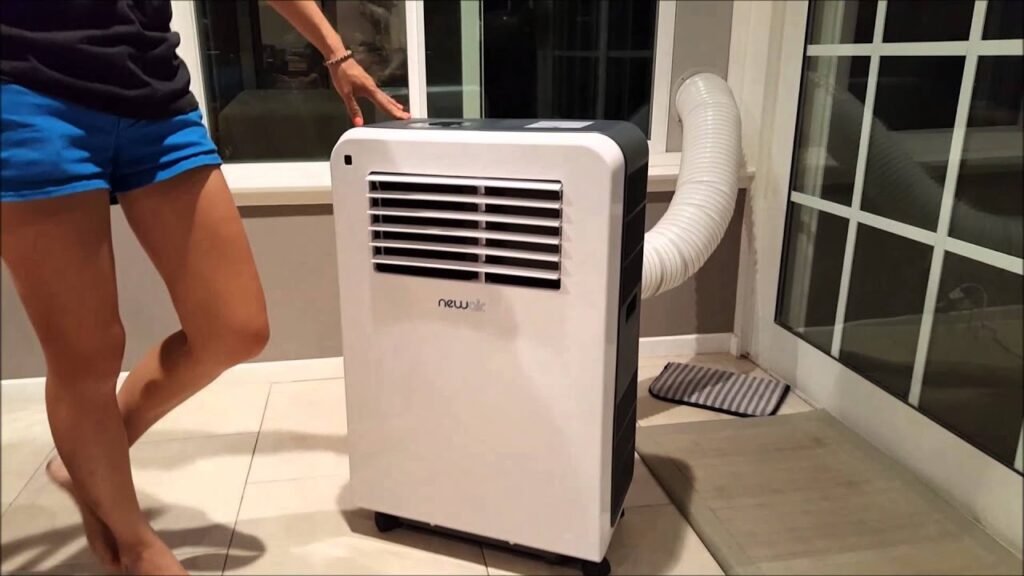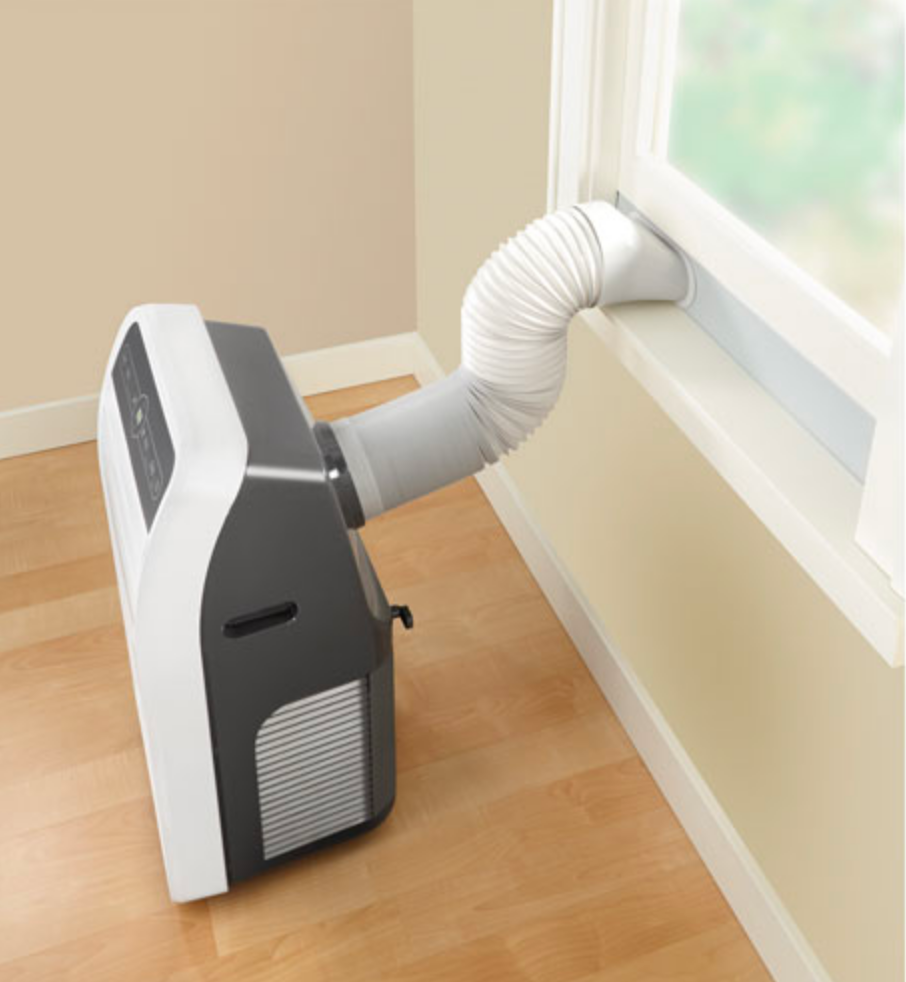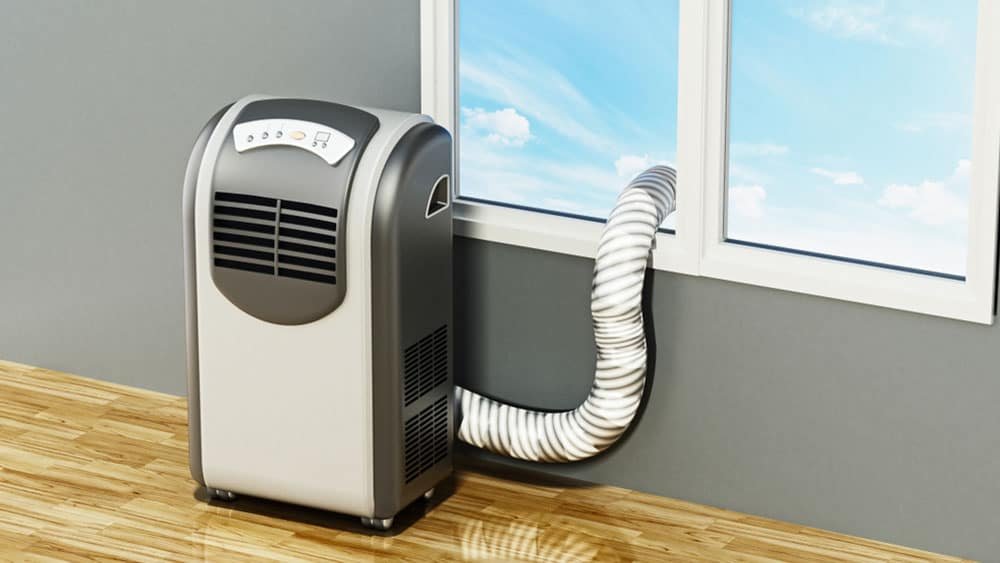If you’ve been considering purchasing a portable air conditioner for your home, apartment, or office, you may be wondering about the installation process. Fortunately, installing a portable air conditioner is a straightforward and simple task. In this article, we will provide you with all the information you need to successfully install your new portable air conditioner. From choosing the right location to connecting the exhaust hose, we’ve got you covered. So, let’s get started and transform your space into a comfortable oasis!
Choosing the Right Location
When installing a portable air conditioner, one of the first steps is to choose the right location for it. One important factor to consider is the size of the room that needs to be cooled. Measure the room to ensure that the portable air conditioner you purchase has enough cooling capacity to effectively cool the space.
Another consideration is finding a suitable electrical outlet. Portable air conditioners require a power source to operate, so make sure there is an outlet near the chosen location. It’s also important to check if the outlet can handle the electrical load of the air conditioner.
In addition, check for window accessibility. Portable air conditioners come with an exhaust hose that needs to be routed out of a window to expel hot air. Make sure the window is easily accessible from the chosen location, allowing for the installation of the exhaust hose.
Lastly, consider the noise levels of the portable air conditioner. Some units can be quite noisy, especially when operating at higher fan speeds. If noise is a concern, choose a location that minimizes the impact of the noise on your daily activities or sleeping patterns.
Proper ventilation is also essential to ensure the efficient operation of the portable air conditioner. Make sure there is adequate airflow in the chosen location. Avoid placing the unit in a cramped or enclosed space, as this can hinder its ability to cool effectively.
Preparing the Area
Before installing the portable air conditioner, it’s important to prepare the area properly to ensure a smooth installation process. Start by clearing the space where the unit will be placed. Remove any furniture or objects that may obstruct the airflow or impede access to the unit.
Next, remove any obstacles from the path between the unit and the window. This will allow for a clear and unobstructed route for the exhaust hose. It’s important to make sure that the hose doesn’t need to bend at sharp angles or pass through narrow gaps, as this can restrict airflow and reduce the efficiency of the unit.
To protect the floor, cover it with a protective material such as a drop cloth or plastic sheeting. This will prevent any accidental spillage or water damage during the installation process. It’s always better to be safe than sorry when it comes to protecting your floors.
This image is property of i.shgcdn.com.
Installing the Exhaust Hose
The exhaust hose is a crucial component of a portable air conditioner, as it allows hot air to be expelled outside. Proper installation of the exhaust hose is essential for the efficient operation of the unit.
Start by locating the exhaust connector on the portable air conditioner. This is usually located at the back of the unit. Attach one end of the exhaust hose securely to the exhaust connector. Ensure that it is tightly fitted to prevent any air leakage.
Next, extend the hose towards the window. It’s important to choose a route that allows for a straight and unobstructed path. Avoid sharp bends or kinks, as this can restrict airflow. Secure the hose in place using the provided accessories or duct tape.
Make sure that the hose is tightly connected at both ends and that there are no gaps or leaks. Any air leakage can reduce the cooling efficiency of the unit.
Setting Up the Window Kit
The window kit is another essential component of a portable air conditioner. It allows for the exhaust hose to be routed out of the window while maintaining a proper seal.
Start by assembling the window kit according to the manufacturer’s instructions. This usually involves attaching the window bracket to the window sill and extending the window kit panels to fit the width of the window.
Once the window kit is assembled, install the window bracket securely on the window sill. This will provide a stable support for the exhaust hose and prevent it from falling out of the window.
Extend the window kit panels to fully cover the width of the window. This will help to create a proper seal and prevent any hot air from entering the room.
Attach the window kit to the window bracket, ensuring that it is securely fastened. This will keep the window kit in place and prevent any movement or dislodging during operation.
Lastly, check for proper sealing between the window kit and the window. Any gaps or leaks can allow hot air to enter the room, reducing the cooling efficiency of the unit. Make any necessary adjustments or use sealing materials like weatherstripping tape to ensure a tight seal.

This image is property of i.ytimg.com.
Securing the Unit
Once the exhaust hose and window kit are properly installed, it’s time to secure the portable air conditioner in its designated location.
Place the unit near the window, ensuring that it is easily accessible for maintenance and operation. It’s important to leave enough clearance around the unit for proper airflow. Avoid placing the unit too close to walls or furniture, as this can restrict airflow and reduce the cooling effectiveness.
Connect the unit to the exhaust hose by attaching the other end of the hose to the window kit connector. Make sure that the connection is tight and there are no gaps or leaks. Any air leakage can reduce the cooling efficiency of the unit.
Adjust the window kit panels to fit snugly against the window. This will help to maintain a proper seal and prevent any hot air from entering the room.
Secure the unit in place by using the provided accessories or brackets. This will prevent any accidental movement or tipping over of the unit.
Powering On the Air Conditioner
With the portable air conditioner securely installed, it’s time to power it on and enjoy the cool air.
Plug in the power cord into a suitable electrical outlet. Ensure that the outlet can handle the electrical load of the air conditioner. Avoid using extension cords or adapters, as they can cause overheating or electrical hazards.
Turn on the unit using the power button or switch. Most portable air conditioners have a control panel that allows you to adjust various settings such as temperature, fan speed, and mode. Take some time to familiarize yourself with the controls and settings of your specific unit.
Set the desired temperature on the unit. This will allow the air conditioner to automatically adjust the cooling to maintain the desired temperature.
You can also adjust the fan speed and mode according to your preference. Some units have multiple fan speeds and cooling modes, such as low, medium, high, or auto. Experiment with different settings to find the most comfortable and efficient cooling for your space.

This image is property of i.ytimg.com.
Routine Maintenance
To ensure the optimal performance and longevity of your portable air conditioner, it’s important to perform routine maintenance. Here are a few maintenance tasks that you should regularly undertake.
Clean the air filter regularly to remove dust and debris that can accumulate over time. Consult the user manual for specific instructions on how to remove and clean the air filter. A clogged or dirty filter can restrict airflow and reduce the cooling effectiveness of the unit.
Empty the condensate reservoir as needed. Portable air conditioners extract moisture from the air, and this moisture is collected in a reservoir or pan. If the reservoir becomes full, it can cause water leakage or affect the cooling performance. Follow the user manual instructions on how to empty the reservoir properly.
Inspect the portable air conditioner for any signs of damage or wear. Check the electrical cord for any fraying or exposed wires. Look for any cracks or leaks in the unit’s housing. If you notice any issues, contact a professional technician for repair or replacement.
Check for proper airflow from the unit. Make sure that there are no obstructions blocking the intake or outlet of the air conditioner. Remove any objects or furniture that may impede airflow. Ensure that the unit has enough clearance around it for proper ventilation.
Proper Storage
If you need to store your portable air conditioner when it’s not in use, it’s essential to follow proper storage procedures to prevent damage and ensure its longevity.
Start by removing the exhaust hose from the unit. Detach the hose carefully to avoid any damage or cracks. Coil the hose neatly and store it in a safe place where it won’t become tangled or damaged.
Disassemble the window kit according to the manufacturer’s instructions. Clean each component and dry them thoroughly before storing.
Clean and dry the unit before storage to prevent the growth of mold or mildew. Wipe down the exterior surfaces with a damp cloth and mild detergent. Ensure that the unit is completely dry before storing.
Find a suitable location for storage that is clean, dry, and free from extreme temperatures. Avoid storing the unit in areas with high humidity or direct sunlight. A basement or closet can be a good option for storage.

This image is property of blog.bestbuy.ca.
Troubleshooting Common Issues
Even with proper installation and maintenance, you may encounter some common issues with your portable air conditioner. Here are a few troubleshooting tips for resolving them.
If the unit is not cooling effectively, check if the air filter is clean and not clogged. A dirty filter can restrict airflow and reduce cooling efficiency. Also, ensure that the exhaust hose is properly installed with no leaks or gaps. Proper sealing is crucial for efficient cooling performance.
Water leakage can occur if the condensate reservoir becomes full or if there are any cracks or leaks in the unit’s housing. Ensure that the reservoir is emptied regularly and that there are no visible signs of damage.
Excessive noise from the portable air conditioner can be caused by various factors, such as loose components or a faulty fan motor. Check for any loose screws or rattling parts and tighten them if necessary. If the noise persists, contact a professional technician for further inspection and repair.
If the unit is not turning on, check if it is properly plugged into a working electrical outlet. Ensure that the outlet can handle the electrical load of the air conditioner. If the unit still doesn’t turn on, consult the user manual or contact customer support for troubleshooting assistance.
Safety Precautions
When installing and using a portable air conditioner, it’s important to prioritize safety. Here are a few safety precautions to keep in mind.
Read and follow the user manual provided by the manufacturer. The manual contains important safety instructions and guidelines for operation, installation, and maintenance.
Use proper electrical connections and avoid using extension cords or adapters. Overloading electrical circuits can lead to overheating and electrical hazards.
When using a portable air conditioner, be mindful of other electrical appliances or devices that are connected to the same circuit. Avoid overloading the circuit by unplugging or reducing the usage of other devices.
Keep flammable objects away from the portable air conditioner. Maintaining a safe distance of at least three feet will help prevent any fire hazards.
Do not block the intake or outlet of the portable air conditioner. Proper airflow is essential for the efficient operation of the unit. Avoid placing furniture or other objects in front of the unit that may restrict airflow.
By following these installation and maintenance guidelines, you can ensure the effective and safe operation of your portable air conditioner. Stay cool and comfortable all year round with your properly installed and well-maintained portable air conditioning unit!

This image is property of cielowigle.com.
